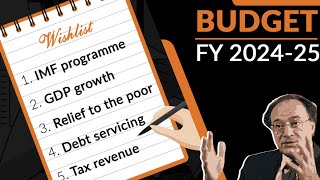State Bank of Pakistan Governor Dr Ishrat Hussain has said that there has been considerable progress in achieving macroeconomic stability in Pakistan as strong fiscal adjustment has led to primary budgetary surplus and significant reduction of fiscal deficits.
Delivering a speech on 'Economy of Pakistan: Past, Present and Future', at the Georgetown University here, he said that current account has turned around from chronic deficit to a surplus of more than 5 percent of GDP, mainly due to renewed export growth and resurgence of overseas Pakistanis' remittances.
Monetary aggregates have been contained and inflation rate is below 4 percent.
External debt burden has been reduced, in absolute terms, from $ 38 billion to $ 35 billion and as proportion of GDP from 62.5 percent to 46 percent.
The risk of default on external debt, which loomed large on the horizon in 1999 and 2000, has been mitigated and the country's capacity to service its restructured debt has considerably improved.
Dr Ishrat said that the exchange rate not only stabilised but appreciated during the last few years, showing significant changes in the key indicators, between October 1999 and September 2003.
He said that the Musharraf government actively pursued an aggressive and transparent privatisation plan whose thrust was on sale of assets in oil and gas industry as well as in the banking, telecommunications and energy sectors, to strategic investors, with foreign investors being encouraged to participate in the privatisation process. "This plan is being followed by elected government of Prime Minister Jamali."
To demonstrate the seriousness of the government in encouraging foreign investment flow in Pakistan, he said, there has been a major and perceptible liberalisation of the foreign exchange regime.
He said that foreign investors can now bring in and take back their capital, remit profits, dividends and fees etc, without any restrictions.
"Foreign Portfolio Investors (FPI) can also enter and exit the market capitalisation of $15 billion. Over 700 listed companies showed average returns of 15 percent that were higher than those in most emerging countries which makes Pakistan an attractive place to invest for FPIs."
As part of this liberalisation, he said, non-residents and residents are allowed to maintain and operate foreign currency deposit accounts, and a market-based exchange rate in the interbank market is at work.
BR100
8,052
Increased By
75.9 (0.95%)
BR30
25,581
Decreased By
-21.4 (-0.08%)
KSE100
76,707
Increased By
498.6 (0.65%)
KSE30
24,698
Increased By
260.2 (1.06%)


















Comments
Comments are closed.